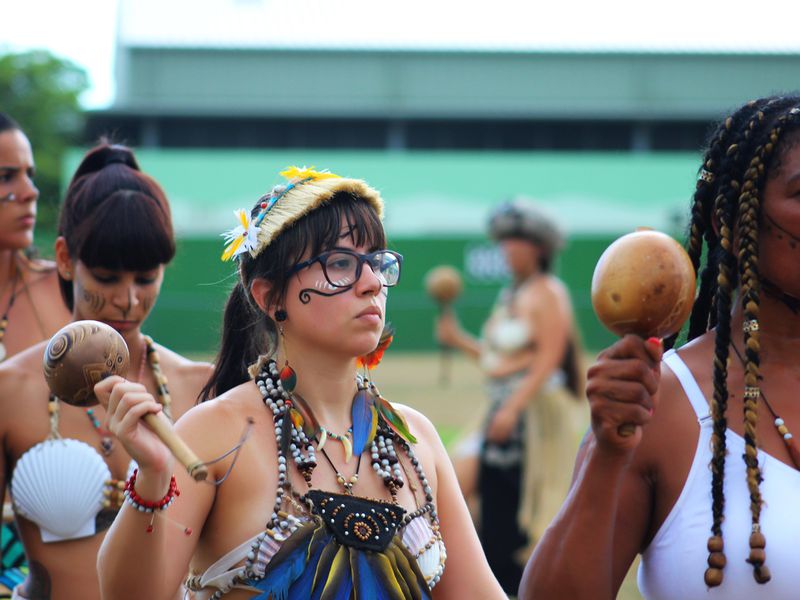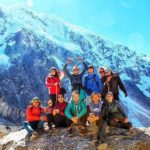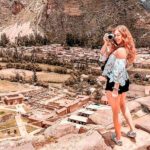
Ethnotourism, therefore, is a type of tourism that respects the values of a community and the natural, cultural and social environment, allowing the exchange of experiences and where these visitors have a truly participatory attitude in their travel experience.
The local communities offer the opportunity to share their traditions and customs, which allows to preserve their cultural elements as well as the recognition of their identity.
But what are the particularities of this type of tourism? It is the members of that community themselves who present their cultural identity to the visitors and the tourist activity takes place in the territory of the community itself and also allows the revitalization of culture and the strengthening of identity, through encounter and intercultural dialogue.
Among these particularities, it would be necessary to emphasize an appreciation, since ethnic tourism has a meeting point and a distancing point with respect to indigenous tourism. Culture is the common point, but indigenous control of initiatives and companies is what makes the difference.
The first emphasizes the activities and benefits of users or tourists, while indigenous tourism emphasizes the participatory construction of ethnic groups to offer a service of lodging, food, specialized guides and cosmogonic practices, whose essential characteristics are part of their cultural identity.
Indigenous tourism, therefore, is understood as the activity where indigenous communities offer visitors the opportunity to share their traditions, uses and customs with the aim of integral and sustainable community development.
The vast majority of tourist destinations today, aware of the interest of tourists, for this type of experience, market different packages and activities to learn first hand that local reality that many look for when we travel.
Getting to know other cultures, many of them thousands of years old, promoting cultural enrichment among people, understanding their contact with the environment and mother earth, how they are organized and, above all, what they expect from tomorrow, is a fundamental part of any trip I make.
But sometimes the line between reality and fiction is extremely thin. Recently, I was reading some criticisms that showed, in a direct way, if this type of tourism really helps these ethnic groups, asking these questions: how do these communities really live when the tourist does not observe? Which part is real and which part has become a reality show?
And it was at this point that I inevitably remembered one of my own experiences with this type of tourism.

Some time ago I was returning home after my last group trip to Panama. To say that I liked the destination is too short. And in part, it is precisely its people who have become so fascinated by its landscapes and its corners. Its people in general and the Emberá Quera community in particular.
The Emberá Quera are one of the 7 indigenous communities that exist in the isthmus and in recent years has opened to share their culture, traditions and history with those who want to get to know it.
During our trip, we share a full day with this community and the fact of starting this trip is synonymous with adventure. To get to them we had to navigate the Gatun River in a small boat surrounded by the most overflowing nature.
Once there, they welcomed us with their characteristic songs and dances, they told us why they were identified, we ate with them a delicious battered fish, acquired that same morning from the river itself, we toured their medicinal plantations, we visited their school and talked, we talked a lot.
The community leader told us that they could perfectly well live in the city, but they didn’t want to. Why? Simply because the city is not made for them.
Their life is that little jungle corner of Panama, away from the noise of the big city, with the Gatun River as an indisputable source of life and community… Sounds good, huh?
But then, isn’t it better to live this way away from cameras and tours or organized trips? Yes, I was told. That’s the way we’ve always done it.
But tourism is an important source of income for them. Income with which they buy the material to build their houses, the fabrics with which they weave their suits and with which they access the boats that allow them to transit and move around the area and we, the tourists, to reach them, of course.
In other words, tourism is an important part of the development and continuity of these communities. And here, in Panama, it’s been where I’ve really been able to see it.
Over the last few years, I’ve been fortunate enough to share time with different local communities. Experiential have been all of them, but the feeling of leaving has not been the same in each of them.
The humility and warmth of the Emberás Indians, their way of caring for and protecting their culture is simply admirable. The pride they feel in showing you their land and their work, their customs and their way of life, makes them endearing people.
We won’t know what really happens when we say goodbye to them. This is something we will only know if we spend enough time with them becoming an active part of their community.
But we must not forget that these communities are part of the tangible and intangible heritage of the destiny of which they are part. Therefore, local communities and natural heritage form an inseparable binomial. Hence the importance of local governments and other key actors in integrating these ethnicities in order to care for and protect the culture and identity of a destination.
Written by Amy M. Cardenas
Like Us On Facebook








